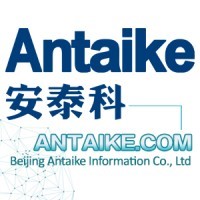

On February 27, 2024, the China state-backed research institution Antaike reported that China's aluminium consumption is projected to experience a slower growth rate this year. Specifically, construction sector demand has decreased due to troubled property markets.

Let us know about Antaike
Founded in 1992 and listed on a new over-the-counter board on Oct 12, 2017, Beijing Antaike Information Co., Ltd. (hereinafter referred to as Antaike) is a state-owned joint stock company, which has become a consulting research centre, data centre, and information centre for domestic nonferrous metals industry.
Relying on the industry position and background of China Nonferrous Metals Industry Information Center, Antaike focuses on the analysis and research of production, consumption, market, management, policy, and other aspects of the nonferrous metals industry and provides consulting services on the global metals industry, engineering, management, safety.
Antaike consulting research covers the fields of base metals, precious metals, rare earth, and iron-steel.
Consumption forecast
Antaike anticipates a modest increase of 1.7 per cent in consumption by the world's leading aluminium consumer, reaching a total of 48.67 million tonnes for the year, as stated in their publication. China is the world’s largest producer and consumer of aluminium.
In contrast to the 7.6 per cent surge witnessed last year, total consumption soared to a historic peak of 47.86 million tonnes.
The upturn in 2023 was primarily ascribed to a resurgence in construction-driven consumption and the rapid expansion of the renewable energy sectors, compensating for subdued export demand.
Data from the National Bureau of Statistics indicates a 17 per cent increase in China's housing completions in 2023. Construction constitutes the largest portion of aluminium demand.
Nonetheless, this year is anticipated to witness a decline in housing completions, resulting in a 2.5 per cent decrease in aluminium demand from the sector to 15.20 million tonnes, as per Antaike's projections.
Demand from other sectors
Demand from the renewable energy sector, predominantly electric vehicles, solar energy, and lithium batteries, will continue to serve as the primary catalyst for growth in the lightweight metal industry.
Responses








